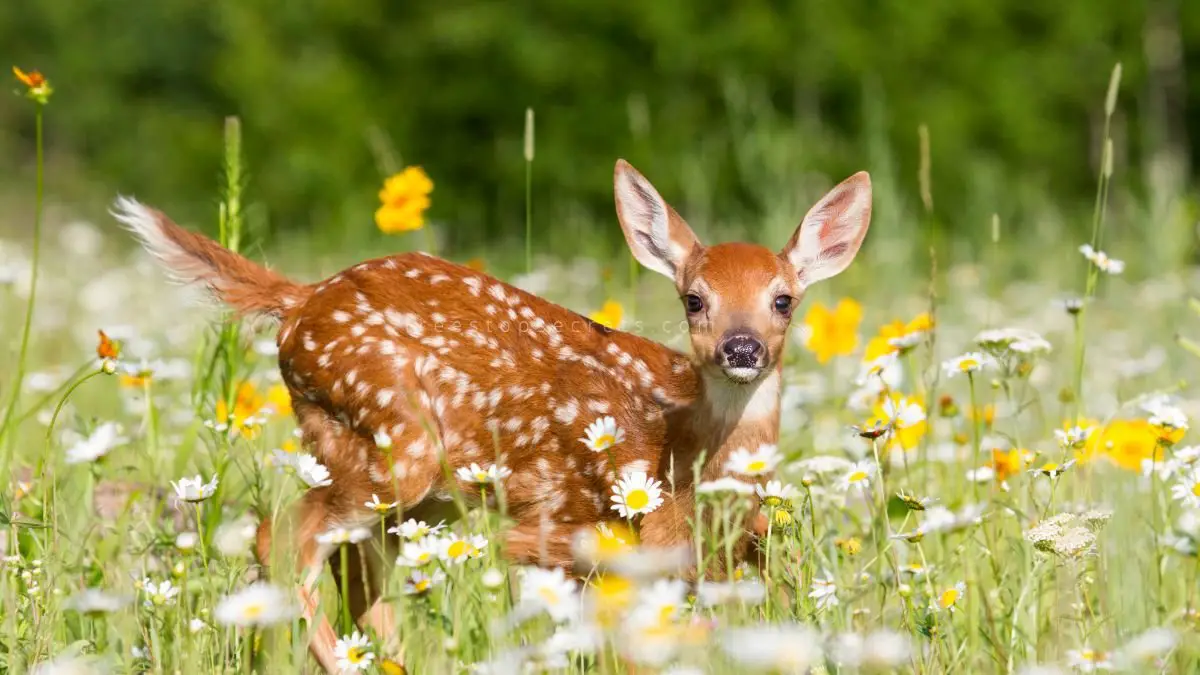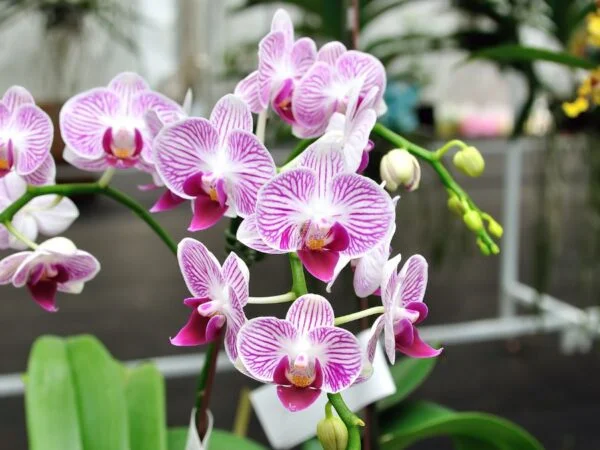
Discover the fascinating world of fragrant blooms, deciduous shrub, and green foliage deer deterrent flowers and how they can help protect your garden. These natural solutions not only add beauty to your gardens with green foliage but also keep pesky deer at bay. By incorporating these plants into your landscaping, you can enjoy a flourishing garden without the worry of deer damage. Learn about the history of using flowers as deer deterrents and explore the most effective options available today.
Key Takeaways
- Plant deer deterrent flowers strategically in your garden to prevent deer damage.
- Choose deer-resistant annuals like marigolds and snapdragons to add color while deterring deer.
- Opt for deer-resistant shrubs such as boxwood and butterfly bush for a low-maintenance garden.
- Incorporate deer-resistant perennials like lavender and yarrow for long-lasting beauty with blooms and flowers.
- Utilize effective groundcovers like creeping thyme and lamb's ear to protect vulnerable areas.
- Avoid planting deer-attractive species like hostas and roses in deer-prone areas.
Understanding Deer Deterrent Flowers
Annuals
Annuals like Floss Flower and Signet Marigold are excellent choices for deterring deer. Planting a mix of annuals not only adds variety to your garden but also helps in keeping deer away. Consider the bloom time and colors of these annuals to create a vibrant and deer-resistant garden.
Shrubs
Opt for shrubs such as Boxwood and Butterfly Bush as they are unappealing to deer. To effectively deter deer, plant a variety of shrubs with different textures and scents. Regularly pruning these shrubs is essential to maintain their shape and properties that repel deer.
Perennials
When selecting perennials, go for options like Russian Sage and Bleeding Heart which are known to be deer-resistant. Mixing perennials of varying heights not only adds visual interest but also helps in creating a dynamic deer-resistant garden. Adequately watering perennials is crucial for their establishment and thriving in areas prone to deer.
Groundcovers
Utilize groundcovers such as Japanese Pachysandra and Painted Fern to protect the soil from deer damage. By combining different types of groundcovers, you can create a visually appealing ground layer that is also resistant to deer. Proper spacing between groundcovers is necessary to ensure optimal growth and coverage, enhancing their effectiveness in deterring deer.
Best Deer-Resistant Annuals
Floss Flower
Plant Floss Flower varieties in different colors for a diverse garden look. Deadhead them regularly to ensure continuous blooming. Consider their sunlight needs when choosing where to plant them.
Signet Marigold
Incorporate Signet Marigolds for their citrusy scent and deer-deterring properties. Use them in borders or containers to add color and keep deer at bay. Experiment with different varieties to find the most suitable ones for your garden.
Verbena
Trim back Verbena in midsummer to promote new growth and extended blooming periods. Mix various Verbena colors for a vibrant, deer-resistant flower bed. Ensure proper drainage to prevent root rot and enhance plant longevity.
Snapdragon
Include Snapdragons in your garden for their striking appearance and deer-resistant qualities. Deadhead spent Snapdragons for continuous flowering all season long. Choose from different cultivars to create a colorful, diverse deer-resistant garden.
Top Deer-Resistant Shrubs
Boxwood
Boxwood, a versatile shrub, requires regular pruning to maintain its shape and density as a deer-resistant plant. Ensure it is planted in well-draining soil with adequate sunlight for optimal growth. Utilize Boxwood as a hedge or border plant to establish a natural deer barrier in your garden.
Cinquefoil
Incorporate Cinquefoil in your garden for its low maintenance and deer-resistant qualities. Opt for different Cinquefoil varieties to introduce texture and color diversity to your landscape. Water Cinquefoil plants deeply but infrequently to foster strong root development and enhance drought tolerance.
Butterfly Bush
For a vibrant garden, plant Butterfly Bush in sunny spots to attract pollinators while deterring deer. Regularly deadhead spent flowers on the Butterfly Bush to stimulate continuous blooming. Consider the mature size of Butterfly Bush when deciding its placement within your garden layout.
Spirea
Select specific Spirea varieties recognized for their deer-resistant traits and appealing blooms. Prune Spirea during early spring to encourage fresh growth and preserve its shape effectively. Plant Spirea in clusters or groups to establish a striking focal point in your deer-resistant garden.
Preferred Deer-Resistant Perennials
Russian Sage
Russian Sage thrives in well-draining soil and full sun, making it unappealing to deer. Allowing it to naturalize creates a wild, deer-resistant aesthetic in your garden. Pruning Russian Sage in late winter encourages new growth and prevents legginess.
Bee Balm
Plant Bee Balm in moist, well-drained soil to deter deer while attracting pollinators. Regularly deadhead Bee Balm for prolonged blooming and overall plant health. To rejuvenate the plants, divide Bee Balm clumps every few years for vigorous growth.
Bleeding Heart
Growing Bleeding Heart in partial shade helps deter deer while showcasing its unique heart-shaped flowers. Mulching around Bleeding Heart plants retains moisture and suppresses weed growth. To maintain plant vigor, avoid overwatering to prevent root rot.
Peony
Peonies planted in fertile, well-drained soil discourage deer browsing and promote blooming. Supporting Peony stems with stakes or rings prevents flopping and enhances aesthetics. To improve flowering, divide Peony clumps every few years for rejuvenation.
Effective Deer-Resistant Groundcovers
Japanese Pachysandra
Japanese Pachysandra serves as a low-maintenance groundcover that effectively deters deer from your garden. This plant thrives in shady areas and requires evenly moist soil with proper drainage. To prevent root rot, avoid planting Japanese Pachysandra in waterlogged or compacted soil.
Painted Fern
Painted Fern is an ideal choice for creating a lush and deer-resistant groundcover in moist, shaded areas. To ensure optimal growth, mulch around Painted Fern to retain soil moisture and regulate temperature. Regularly divide Painted Fern clumps every few years to maintain plant health and prevent overcrowding.
Lady's Mantle
Lady's Mantle is best grown in well-drained soil with partial shade to effectively deter deer while showcasing its unique foliage. Deadhead spent blooms on Lady's Mantle to encourage continuous flowering and prevent self-seeding. Rejuvenate the plants by dividing Lady's Mantle clumps in early spring to maintain their vigor.
Plants to Avoid in Deer-Prone Areas
Deer-Attracting Plants
Deer are drawn to plants with soft, succulent foliage like Hostas and Impatiens. These plants act as a magnet for deer in your garden.
Avoid planting these species as they are likely to attract deer and result in damage to your garden.
Research Before Planting
Before selecting plants for your garden, it's crucial to research plant toxicity and deer preferences. Understanding what deer find appealing can help you make informed decisions.
By choosing plants that are less attractive to deer, you can minimize the risk of damage and create a more deer-resistant landscape.
Creating a List
Developing a list of deer-resistant plants is essential for guiding your landscaping choices in areas prone to deer activity. This list can serve as a reference point when planning your garden.
Consider including plants like Lavender, Yarrow, and Sage, which are known for their deer-resistant properties.
Deer-Proofing Tips for Your Garden
Barriers
When protecting your garden from deer, consider installing physical barriers like fences or netting. These structures can effectively safeguard vulnerable plants from deer browsing. By creating a physical obstacle, you deter these animals from entering and damaging your garden.
Repellents and Deterrent Plants
Utilize deer repellents strategically in your garden to discourage deer activity. These products emit odors or tastes that deer find unpleasant, deterring them from approaching your plants. Planting deterrent flowers, such as lavender or marigolds, can help repel deer due to their strong scents.
Plant Rotation
To prevent deer adaptation and habituation to specific plant species, regularly rotate deer-resistant plants in your garden. By changing the types of plants periodically, you make it challenging for deer to become accustomed to feeding on a particular species. This practice helps maintain the effectiveness of your deer deterrent strategies.
Designing a Deer-Resistant Garden
Strategic Plant Placement
When designing a deer-resistant garden, strategically place resistant plants to act as natural barriers. Create a layout that deters deer from entering sensitive areas.
Consider planting resistant plants like lavender, yarrow, or Russian sage along the garden's perimeter. These plants emit strong scents that repel deer.
Aesthetically Pleasing Landscape
Incorporate a variety of colors, textures, and heights in your garden design. Mix deer-resistant plants with different bloom times to ensure year-round interest.
Choose plants like coneflowers, salvia, and ornamental grasses for their beauty and ability to withstand deer browsing.
Understanding Deer Behavior
Before finalizing your garden plan, consider the local deer population and their behavior patterns. Research which deer species are prevalent in your area and what they typically feed on.
Deer tend to avoid plants with strong fragrances or prickly textures. Utilize this knowledge to select resistant plants that are unappealing to deer.
Closing Thoughts
In creating a deer-resistant garden, you've learned about various plants that can deter these animals effectively. By incorporating deer-resistant annuals, shrubs, perennials, and groundcovers while avoiding plants that attract deer, you can design a beautiful and functional garden that thrives without constant deer interference. Implementing the deer-proofing tips shared here will further safeguard your garden from potential damage.
Now armed with knowledge on how to protect your garden from deer browsing, it's time to take action. Start planning and planting your deer-resistant garden today to enjoy a lush landscape free from the destruction caused by these animals. Your efforts will not only benefit your garden but also inspire others to create wildlife-friendly and sustainable outdoor spaces.
Frequently Asked Questions
What are deer deterrent flowers?
Deer deterrent flowers are plants that naturally repel deer due to their strong scents or tastes, helping to protect your garden from deer browsing and damage.
Which are the best deer-resistant annuals?
e of the best deer-resistant annuals include marigolds, snapdragons, nasturtiums, and zinnias, which are colorful and easy to grow while deterring deer.
What are the top deer-resistant shrubs?
Top deer-resistant shrubs include boxwood, butterfly bush, juniper, and potentilla, offering beautiful foliage and blooms while being unappealing to deer.
Can you recommend preferred deer-resistant perennials?
Preferred deer-resistant perennials include lavender, yarrow, salvia, and coneflowers, known for their resilience and ability to thrive while repelling deer.
How can I effectively use deer-resistant groundcovers?
Utilize groundcovers like creeping phlox, lamb's ear, pachysandra, or sweet woodruff to create a low-maintenance carpet that deters deer while adding beauty to your landscape.
Image Source: Paid image from CANVA





